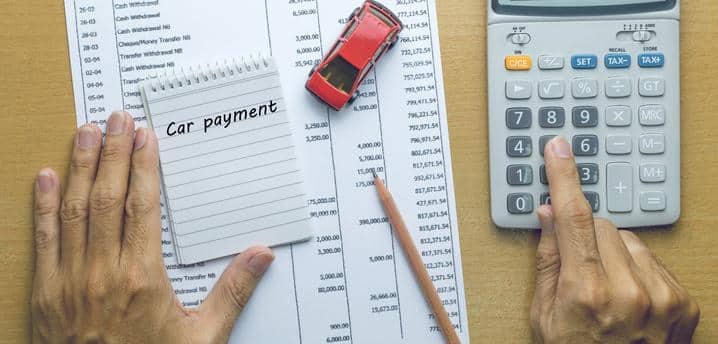Biweekly or Monthly Car Payments, What’s Best?
;)

Biweekly payments can help you get ahead on your car loan, but they might not save you that much.
Typically, car loans require monthly payments, but there’s also the option to pay biweekly. One of the main differences between the two is that when making biweekly payments you’ll have 13 car payment periods in a year, instead of the typical 12 monthly payments.
The amount of your car loan payments will also differ between both methods. Biweekly payments will typically be smaller amounts compared to monthly ones, but since biweekly payments are made more frequently the total paid each year will be greater.
Choosing to make biweekly payments could help you pay off your car loan faster, but it’s not always the best option for everyone. When considering biweekly or monthly car loan payment options, ultimately it’s a personal decision that comes down to understanding the differences and how it applies to your situation.
The Difference Between Biweekly and Monthly Payments
Biweekly is just a fancy way of saying every two weeks. It’s common among homeowners looking to make an extra mortgage payment to build equity and pay off their loan faster. You can set up your auto loan payments this way, as well.
Essentially, you’d take your monthly car loan payment and split it in half, making that payment biweekly. For example, let’s say your auto loan is $453 per month. If you wanted to make biweekly payments, you’d start making payments of $226.50 (half of $453) every two weeks.
Plus, you’d end up making 13 full car payments — or one extra payment — in one year. There are 52 weeks in a year but not all months have an even four weeks. Some months have five weeks, which is why if you get paid every other week you may receive three paychecks in one month. Due to these “extra” weeks, you will naturally end up paying more on your car loan throughout the year if you stick to a biweekly payment schedule.
Let’s run the numbers once more.
If you pay $453 per month for a whole year, this adds up to $5,436 total paid toward your car loan ($453 x 12).
With a biweekly payment, you’d make 26 payments instead of 12 (52 weeks in a year divided by 2). So if you take your biweekly amount which is half of your monthly payment ($226.50) and multiply it by 26, you’d end up paying a total of $5,889 toward your car loan in a year.
That’s $453 more a year, or essentially one full extra monthly car payment.
Can You Save Money With Biweekly Payments?
Your car payment amount doesn’t just go toward the principal balance, a portion goes toward interest. Another portion could go toward any fees or optional add-ons you agreed to when you financed the vehicle.
Then, the remainder of your payment will go toward the principal. Generally, the more you pay toward your auto loan, the more you can save on interest since you’d be chipping away at the principal balance faster.
The best way to determine how much you could save is by plugging your numbers into our auto loan calculator. Let’s say you have a $20,000 car loan at a 5.5% interest rate. There are 60 months or five years left on your loan and your monthly payment is $382.02.
At the end of your repayment term, you’ll have paid $22,921.39 total on your loan and $2,921.39 in total interest alone.
Let’s say you made biweekly payments the whole time instead of monthly payments. At the end of your loan term, you’d have paid $2,632.10 in interest saving $289.30.
Do You Pay Your Car off Faster With Biweekly Payments?
Since you’d be saving some money and making at least one extra car payment each year, it’s safe to say you can pay your car off faster with a biweekly payment plan. You’ll need to decide if this is worth it though.
With the most common car loan term being 72 months (or 6 years), an extra payment per year with biweekly payments would save you only about 6 months’ time. You’ll need to consider if the small amount of time and money you’d save is worth it.
If you have good credit your chances of securing a low auto loan interest rate are pretty good. According to Experian, borrowers with excellent credit scores who financed a new vehicle in 2022 saw an average rate of 2.47%. While the average interest rate for borrowers in the subprime credit tier was 9.41%
Credit cards tend to have even higher interest rates to personal loans with the average APR of 21.40% in 2022. If you have higher interest debt, it may make more sense — and cents — to direct your money toward those accounts instead of making biweekly car payments.
However, if your goal is to pay off your car loan amount early, biweekly payments in combination with extra principal payments can really help speed things up. Determine how much you can afford to make an accelerated biweekly payment regularly. Factor this into your biweekly amount to save even more on interest payments and cut your repayment term down by months or even years.
Going back to our previous example of the $20,000 auto loan with a 60-month term, just making an extra biweekly payment of $200 could reduce your repayment term by almost three years.
Consider Refinancing Your Auto Loan as an Alternative
If you’re looking for faster ways to pay off your auto loan, refinancing could be an option to help you save money and cut your repayment term. Refinancing your auto loan does not require making another down payment like you did when you initially got a car loan. Instead, it involves switching to a new lender that offers a lower interest rate.
If you combine a lower interest rate with biweekly and additional principal payments, this would really accelerate your progress.
Before you refinance, it’s important to shop rates to see what terms other lenders are offering. Run the numbers to see how much you can save or even if you can lower your minimum monthly payment.
Online marketplaces like RateGenius partner with multiple lenders to help you compare and find the best auto refinancing terms, you can shop rates easily and apply online in minutes. Last year the average customer that used our marketplace to refinance their auto loan saved $1,158 annually.
Applying to refinance your auto loan doesn’t always mean you’ll be approved. Factors such as your credit score, credit history (other loans or lines of credit), and debt-to-income ratio will be considered by lenders before they decide to finance your loan.
If you’re approved for an auto loan refinance, you’ll need to pay off the loan with your existing lender. Sometimes, your new lender will handle this for you. Then, you can move forward with making payments to your new lender under the new terms.

Pros and Cons of Making Biweekly Car Loan Payments
When deciding between biweekly and monthly car loan payments, you’ll want to fully consider the pros and cons before making a decision.
On one end, biweekly payments could help you get ahead on your car loan, in a sense. This would come in handy if a financial emergency ever came up and you weren’t able to make a payment that month. Some lenders offer grace periods and other assistance, but being somewhat ahead on payments could serve as an added cushion.
Yet, monthly car payments are simple and may not cost you much extra money in the long run. You can also make extra payments whenever you want, as long as your loan doesn’t have a prepayment penalty.
Should You Choose Biweekly Car Payments?
Depending on your auto loan terms, switching to biweekly payments may not save you a ton of money, but it could save you some money in the long run. However, if your goal is to pay your car loan off as quickly as possible, you may want to consider refinancing instead, and making extra payments as well.
Also, consider other debt you might have that’s at a higher interest rate. It may make more sense to put any additional money you have toward those accounts first.
Whatever you decide doesn’t have to be set in stone as things might change during your repayment term. If you find it easier to budget for biweekly payments, it’s not hard to set up and give it a try. Additionally, you can always look into refinancing and explore savings this way at any time.

